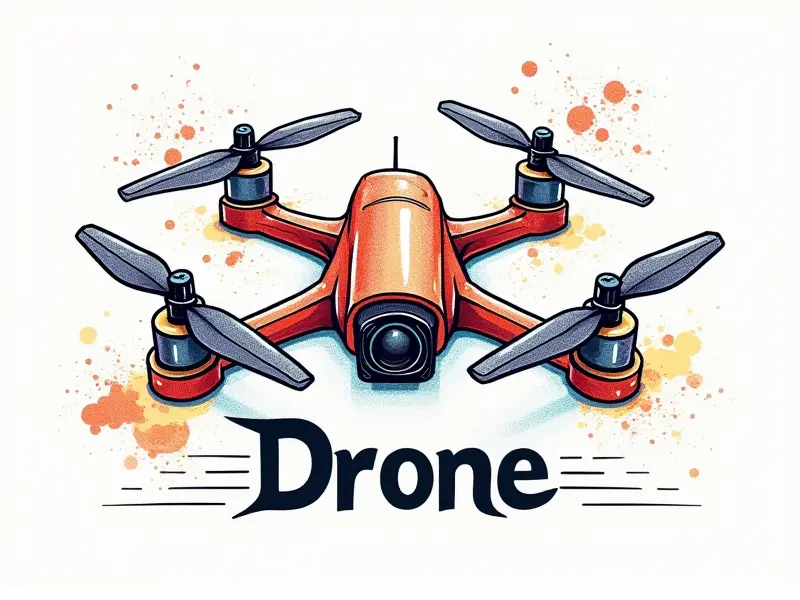How do BLDC motors work?

Why BLDC Motors Are Essential for RC Flyers
Beyond the realm of traditional brushed motors, Brushless DC (BLDC) motors have revolutionized the world of remote control (RC) flying. These motors offer unparalleled performance and efficiency, making them a cornerstone in modern RC aircraft design. Their ability to provide high torque at low speeds makes them ideal for takeoff and landing phases, where precision is crucial.
Moreover, BLDC motors are known for their durability and longevity, which translates into fewer replacements and lower maintenance costs over time. This reliability ensures that RC pilots can focus on the thrill of flight rather than worrying about motor failures.
How Do BLDC Motors Power Drones?
The power and efficiency of BLDC motors are particularly advantageous in drone applications, where weight-to-power ratios are critical. These motors enable drones to achieve longer flight times and higher speeds compared to their brushed counterparts. The absence of brushes means less electrical resistance and heat generation, leading to more efficient energy usage.
BLDC motors also offer better control over the speed and torque of a drone's propellers through electronic commutation. This precise control is essential for advanced maneuvers such as hovering, rapid direction changes, and precision landings.
Inside BLDC Motors: The Science Explained
The inner workings of a BLDC motor involve permanent magnets on the rotor and electromagnets (stator) that generate magnetic fields. Unlike brushed motors, which rely on mechanical brushes to switch current flow, BLDC motors use an electronic controller to manage this process.
- Stator: The stator consists of coils wound around a laminated iron core. These coils create the rotating magnetic field when energized by the controller.
- Rotor: The rotor contains permanent magnets that interact with the stator's magnetic fields, causing rotation.
- Controller: An electronic circuit board controls the timing and sequence of current flow to the stator coils. This precise control allows for smooth operation and high efficiency.
Understanding BLDC Motor Efficiency in RC Aircraft
The efficiency of BLDC motors is a key factor in their widespread adoption in RC aircraft. These motors convert electrical energy into mechanical power with minimal losses, thanks to the absence of brushes and commutator wear.
In RC applications, this translates to improved flight performance, including:
- Increased Flight Time: Less wasted energy means longer flights without needing frequent battery changes.
- Better Speed Control: Precise electronic control allows for smoother and more responsive speed adjustments during flight.
The Role of BLDC Motors in Modern RC Aircraft
In the realm of modern RC aircraft, BLDC motors play a pivotal role by providing the necessary power-to-weight ratio required for high-performance models. These motors are integral to achieving the agility and responsiveness that pilots demand.
Furthermore, advancements in motor technology have led to smaller, more compact designs without sacrificing performance. This allows for innovative aerodynamic shapes and improved maneuverability.
Unraveling the Magic of BLDC Motors
The magic behind BLDC motors lies in their ability to deliver high torque at low speeds while maintaining efficiency across a wide range of RPMs. This makes them ideal for applications requiring both power and precision, such as takeoff and landing.
Additionally, the elimination of brushes reduces friction and wear, leading to longer motor life and fewer maintenance issues. This reliability is crucial in RC flying, where downtime can be frustrating and costly.
Demystifying BLDC Motor Functionality for RC Pilots
To fully appreciate the benefits of BLDC motors, it's essential to understand how they function. The electronic commutation system ensures that current flows through specific coils at precise moments, creating a rotating magnetic field that drives the rotor.
This process is managed by sophisticated control algorithms that optimize performance based on real-time data from sensors and user inputs. As a result, RC pilots can enjoy unparalleled control over their aircraft's movements.
How BLDC Motors Enhance Performance in Drones
The impact of BLDC motors on drone performance is significant. By offering higher torque at lower speeds, these motors enable drones to take off and land smoothly without compromising speed or agility during flight.
This combination of power and efficiency makes BLDC motors indispensable for advanced drone applications such as aerial photography, surveillance, and delivery services.
BLDC Motors: Key to High-Performance RC Helis
In the world of RC helicopters, BLDC motors are crucial for achieving the high-performance standards demanded by enthusiasts. These motors provide the necessary power-to-weight ratio and torque needed for precise control during hover and maneuvering phases.
Moreover, the durability and reliability of BLDC motors ensure that RC helis can perform complex aerobatic maneuvers without fear of motor failure or excessive wear.
The Role of BLDC Motors in FPV Racing Success
First-person view (FPV) racing relies heavily on the responsiveness and efficiency of BLDC motors. These motors enable racers to achieve high speeds while maintaining tight control over their aircraft, crucial for navigating through challenging courses.
The ability to handle sudden changes in direction and altitude with precision is a direct result of the advanced commutation systems employed by BLDC motors.
Understanding BLDC Motor Technology in RC Helicopters
In RC helicopters, understanding the intricacies of BLDC motor technology is essential for optimizing performance. These motors provide the necessary torque and power to manage complex aerodynamic challenges unique to rotary-wing aircraft.
The precise control offered by electronic commutation systems allows for smoother transitions between flight modes, enhancing overall maneuverability and stability.
Conclusion
In summary, BLDC motors have become an indispensable component in the world of RC flying. Their efficiency, reliability, and performance advantages make them a preferred choice among enthusiasts and professionals alike. From drones to high-performance helis and FPV racing, the versatility and power of BLDC motors continue to push the boundaries of what is possible in remote control aviation.

